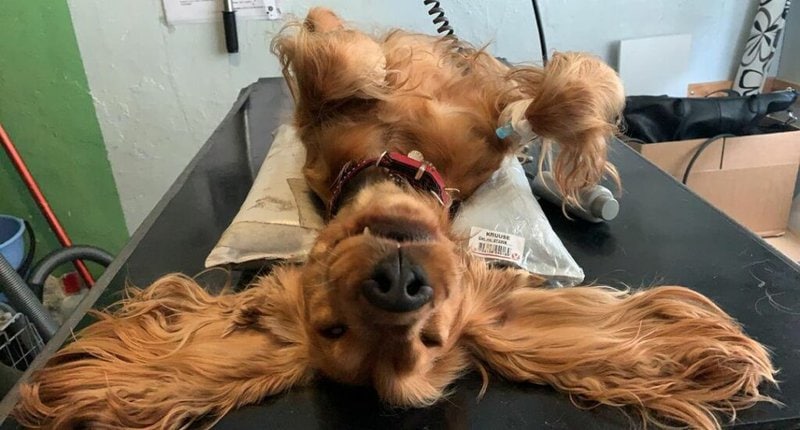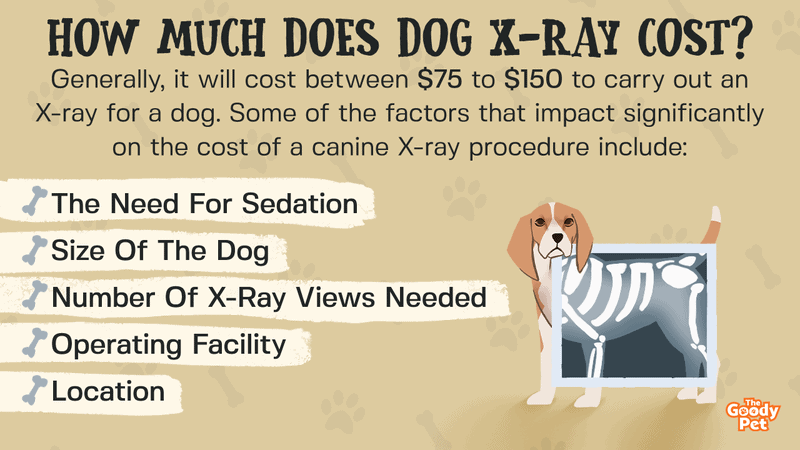X-rays are effective tools commonly employed by vets in diagnosing illnesses and medical conditions, but how much does it cost to get one and what are the potential benefits for your dog.
Firstly, how much does a typical dog X-ray procedure cost? The general cost of getting a dog X-ray typically ranges between $75 to $150. However, the exact amount you’ll spend to get an X-ray for your dog depends on several factors including the need for sedation, the dog’s size and the amount of X-ray views that are needed.
X-rays can provide pictures of a dog’s tissues, organs and bones, basically a pooch’s internal structure, and these pictures come in quite handy when a vet is investigating medical conditions. We’ll see how an X-ray is usually obtained in this article. But before that, let’s take a look at the cost of getting an X-ray for your dog and the factors influencing the actual amount you’ll end up paying.
How Much Is A X-Ray For A Dog?
Generally, it will cost between $75 to $150 to carry out an X-ray for a dog.
As we can see from the opening statement, the procedure that involves running an X-ray on a dog is relatively inexpensive. And while you can expect to pay closer to the lower price range, there are some factors that can make you end up having to pay closer to $150 to get an X-ray of your dog’s leg for instance.
Some of the factors that impact significantly on the cost of a canine X-ray procedure include:
The Need For Sedation
While most dogs will typically not need to get sedated to undergo an X-ray test, there are cases where the pooch may be in too much pain from broken bones and injuries or where the position required to take the X-ray is too inconvenient for the dog to stay still.
In cases like the above, the vet may need to lightly sedate the dog or employ the use of anesthetics, and this will impact on the final bill of the X-ray procedure.
Size Of The Dog
As stated earlier, dogs may need to be anesthetized before a vet can successfully run an X-ray. And as a rule of thumb, the bigger a dog is, the more the amount of sedatives that are required to put the pooch to sleep.
Consequently, this translates into higher X-ray bills for larger dogs that require anesthesia. Owners of small dogs needing sedation will also need to pay more, but this is significantly lesser than what is obtainable with bigger dogs.
Number Of X-Ray Views Needed
There are some instances where the vet may need to carry out more than one X-ray test on a dog to be able to effectively diagnose whatever ailment is troubling the dog. And in such cases, you’ll have to pay a stipulated amount for the additional tests.
Operating Facility
Generally, it will cost less to carry out an X-ray procedure on your dog at a general vet’s office, compared to what is obtainable at specialist animal hospitals.
Location
X-Ray bills may also vary significantly with the geographical location of the facility where the procedure is to be carried out.
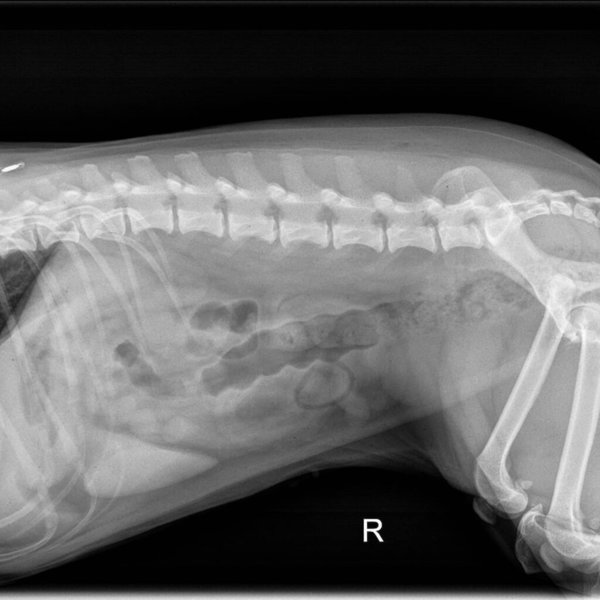
How Do They Do An X-Ray On A Dog?
The process of carrying out an X-ray on a dog typically involves visiting the vet to consult on the need for an X-ray, determining whether or not there’s a need for sedation and the actual radiographing procedure.
Canine X-rays are typically classified based on the area of the dog’s body that needs attention, with the most common cases being chest, abdominal, joint, limb and dental X-rays.
However, regardless of the part of the pooch’s body that requires attention, the X-ray procedure remains largely the same, and is typically carried out following the steps listed below:
Determining If There’s A Need For Sedation
Before embarking on the procedure to obtain a pooch’s X-ray, the vet will first examine the pooch to decide whether there’ll be a need to administer anesthesia.
Dogs need to be completely still while under the X-ray equipment, and this can be particularly difficult to achieve if the pooch is in pain from injuries and broken bones.
That said, sedation is often required for X-rays of the skull, oral cavity and spine. On the other hand, simpler procedures such as obtaining a radiograph of the abdomen may not require sedation.
Getting The Dog’s X-Ray
X-rays are typically acquired by placing a plastic cassette containing the film under the target area.
The X-ray equipment is then fixed on a mechanical arm, and aimed over this target area. Once the pooch is still, the X-ray equipment is triggered and various images showing the affected area in different grey shades are taken.
This entire process is typically completed within 10 to 15 minutes. And there may be a need to reposition the pooch during the procedure to allow clearer images to be captured.
What Happens After Getting The Dog’s X-Ray?
Once a dog’s X-rays have been successfully captured, the films are processed and the resulting images are passed on to the vet for thorough analysis.
Processing of X-ray images is typically completed in less than half an hour, and your vet will call to discuss the results of the test and further actions with you.
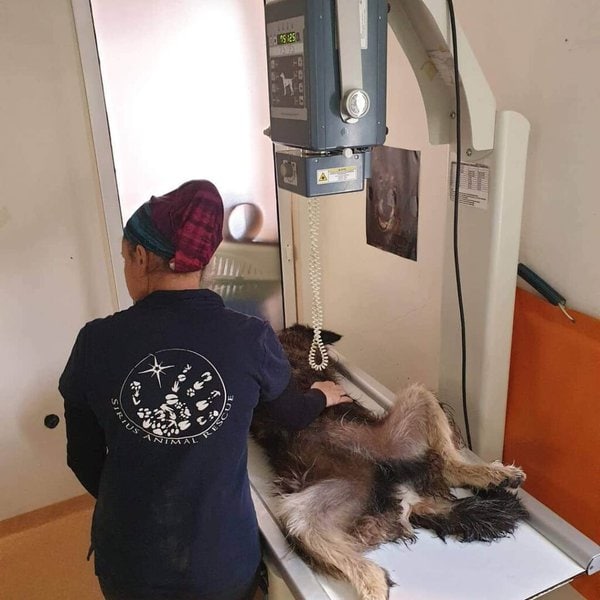
What Can An X-Ray Show On A Dog?
Canine X-ray procedures can show the presence of foreign objects in the dog and reveal the existence of bladder stones, tumors, fractures and bone deformations.
An X-ray can also be used to determine if a dog is pregnant, and it can be a useful tool in monitoring the spread of cancer in a dog’s body.
Presence Of Foreign Objects
If you suspect that your dog has ingested harmful substances such as sticks, plastic or glass, you can request that a vet carry out an X-ray procedure on the pooch to confirm your suspicions.
And not only do X-rays help reveal the location of these harmful substances in the dog’s body, they also give the vet an idea of the medical procedure that will be most effective at getting rid of such substances.
Bladder Stones
X-rays are particularly effective at revealing the presence of calcified bladder stones that may be causing great discomfort to the pooch. And armed with the location of these stones, the vet can then embark on a medical procedure to get rid of these stones.
Tumors
Once a dog is suspected to have cancer, one of the first medical procedures a vet will carry out is an X-ray to spot and identify these cancerous tumors. That said, not all tumors can be detected by a simple X-ray and the vet will need to carry out more advanced surgical procedures.
Fractures And Bone Deformation
One of the most popular uses of canine X-rays is to show the location and extent of joint dislocations and bone fractures in the dog’s body.
Pregnancy
While an Ultrasound is the ideal medical procedure used to confirm pregnancy and how far along a dog is, X-rays can assist a vet in making a calculated guess on the expected litter size.
Typically, by the 45th day of canine pregnancy, the puppies’ skeletal structures are developed enough to be visible on an X-ray. And this allows a vet to determine the number of puppies the pooch is carrying.
What Does An X-Ray Not Show On A Dog?
While it may seem like X-rays can show the existence of almost any hidden ailment in a dog’s body, the fact is that there are some medical conditions that can’t be diagnosed by a simple radiograph.
That said, some of the things that X-rays are not particularly effective at revealing include:
- Tumors whose colors blend in with the surrounding tissue
- Issues with the dog’s brain, inner heart structure and lungs
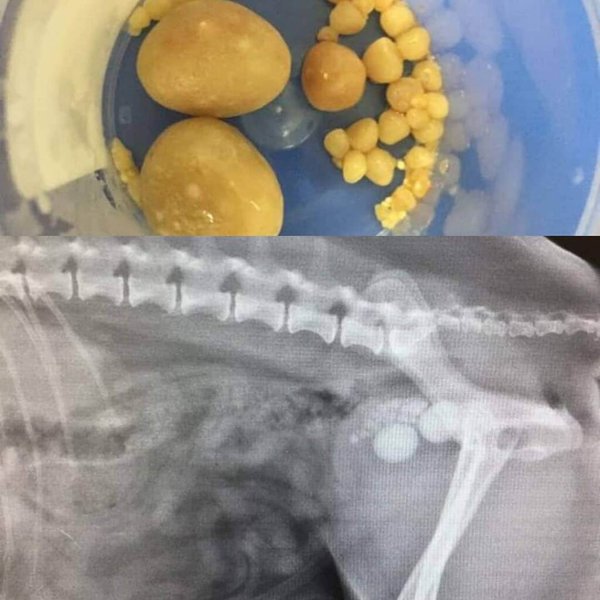
Are X-Rays Bad For Dogs?
Obtaining an X-ray involves exposing the dog to a significant amount of radiation and over-exposure to this radiation can be potentially harmful to the pooch in some cases.
To prevent an unhealthy exposure to radiation, radiology personnel in charge or carrying out the X-ray tests typically put on special protective lead gowns and shields. Parts of the dog’s body that aren’t being radiographed are also usually covered by protective equipment.
Dog owners are not allowed to be around when the pooch’s X-ray is being obtained.
There is also an argument that X-rays may be harmful to unborn puppies. And while there is a belief that X-rays are harmless to unborn puppies once they’ve reached a certain developmental stage, proponents of this argument believe that X-rays should be used as a diagnostic tool only.
